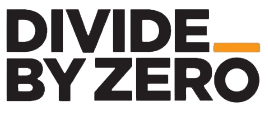In the automotive industry, the availability of spare parts is crucial for maintaining vehicles and ensuring customer satisfaction. Traditionally, manufacturers have relied on large warehouses to store an extensive inventory of spare parts. However, this approach comes with high costs and logistical challenges. Enter 3D printing – a game-changing technology that enables the on-demand production of spare parts, reducing the need for vast storage spaces and ensuring that replacement parts are readily available. This blog explores how 3D printing is transforming the way automotive manufacturers handle spare parts.
1. The Traditional Spare Parts Challenge
High Inventory Costs
Maintaining a large inventory of spare parts involves significant costs related to storage, management, and depreciation. Parts that remain unsold for extended periods can become obsolete, leading to financial losses.
Logistical Issues
Distributing spare parts from centralized warehouses to various locations can be a complex and time-consuming process. Delays in shipping can result in extended vehicle downtime, causing inconvenience for customers and potential loss of business.
Space Constraints
Warehousing spare parts requires substantial physical space, which could be used for other productive purposes. Additionally, managing a vast inventory demands meticulous organization and tracking.
2. The 3D Printing Solution
On-Demand Production
3D printing enables the production of spare parts on-demand, eliminating the need for large inventories. When a part is needed, it can be printed quickly and precisely, reducing lead times and ensuring immediate availability.
Cost Efficiency
By producing parts only when required, manufacturers can significantly cut down on storage and inventory costs. The reduction in warehousing expenses translates to substantial savings over time.
Design Flexibility
3D printing offers unparalleled design flexibility, allowing manufacturers to produce complex geometries and customized parts with ease. This capability is particularly useful for creating parts that are no longer in production or are specific to certain vehicle models.
3. Applications in the Automotive Industry
Legacy Parts
For older vehicles, finding replacement parts can be challenging as they may no longer be in production. 3D printing allows manufacturers to create legacy parts on-demand, ensuring that vehicles can be maintained and serviced without the need for searching through scrap yards or relying on third-party suppliers.
Custom Components
Custom components that are tailored to specific vehicle models or customer preferences can be produced efficiently using 3D printing. This level of customization enhances the value and performance of the vehicle, providing a unique selling point for manufacturers.
Rapid Prototyping and Testing
Before committing to mass production, manufacturers can use 3D printing to prototype and test new spare parts. This rapid prototyping process allows for quick iterations and refinements, ensuring that the final part meets all performance and quality standards.
4. Case Studies from Divide By Zero Technologies
Tata Autocomp Collaboration
Divide By Zero Technologies has collaborated with Tata Autocomp to leverage 3D printing for on-demand production of spare parts. By integrating Divide By Zero’s advanced 3D printers, Tata Autocomp can now produce custom and legacy parts efficiently, reducing their reliance on extensive inventories and minimizing lead times.
Custom Tooling for Mahindra
Mahindra, a leading automotive manufacturer, has utilized Divide By Zero’s 3D printing solutions to create custom tooling and fixtures for their assembly lines. This has enabled Mahindra to produce specific parts on-demand, enhancing their production flexibility and reducing downtime.
Ergonomic Tooling for TVS
TVS, another major player in the automotive industry, has benefited from Divide By Zero’s ergonomic tooling solutions. By printing custom tools that are lightweight and easy to handle, TVS has improved operator efficiency and safety, while also ensuring that necessary parts are always available when needed.
5. The Future of On-Demand Spare Parts with 3D Printing
Digital Inventory
The concept of a digital inventory is set to revolutionize the spare parts industry. Instead of physical stockpiles, manufacturers will maintain digital files of parts that can be printed as needed. This approach not only saves space but also allows for quick updates and modifications to part designs.
Distributed Manufacturing
With 3D printing, spare parts can be produced closer to the point of use, reducing transportation costs and lead times. Distributed manufacturing networks, where parts are printed locally, will become increasingly common, enhancing the responsiveness and efficiency of the supply chain.
Sustainability
On-demand 3D printing contributes to more sustainable manufacturing practices by reducing material waste and energy consumption. Producing only what is needed minimizes excess production and the associated environmental impact, aligning with the industry’s move towards greener practices.
Conclusion
3D printing is revolutionizing the production and management of spare parts in the automotive industry. By enabling on-demand production, this technology reduces the need for large warehouses, cuts inventory costs, and ensures that replacement parts are readily available when needed. Divide By Zero Technologies is at the forefront of this transformation, providing innovative 3D printing solutions that empower automotive manufacturers to optimize their supply chains. As the technology continues to evolve, its impact on spare parts management will only grow, driving further advancements in the automotive sector.

